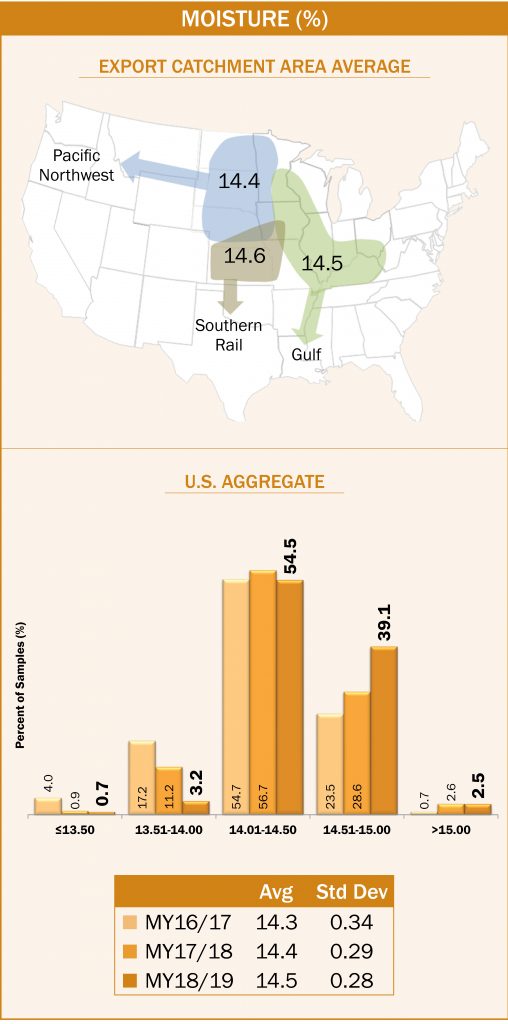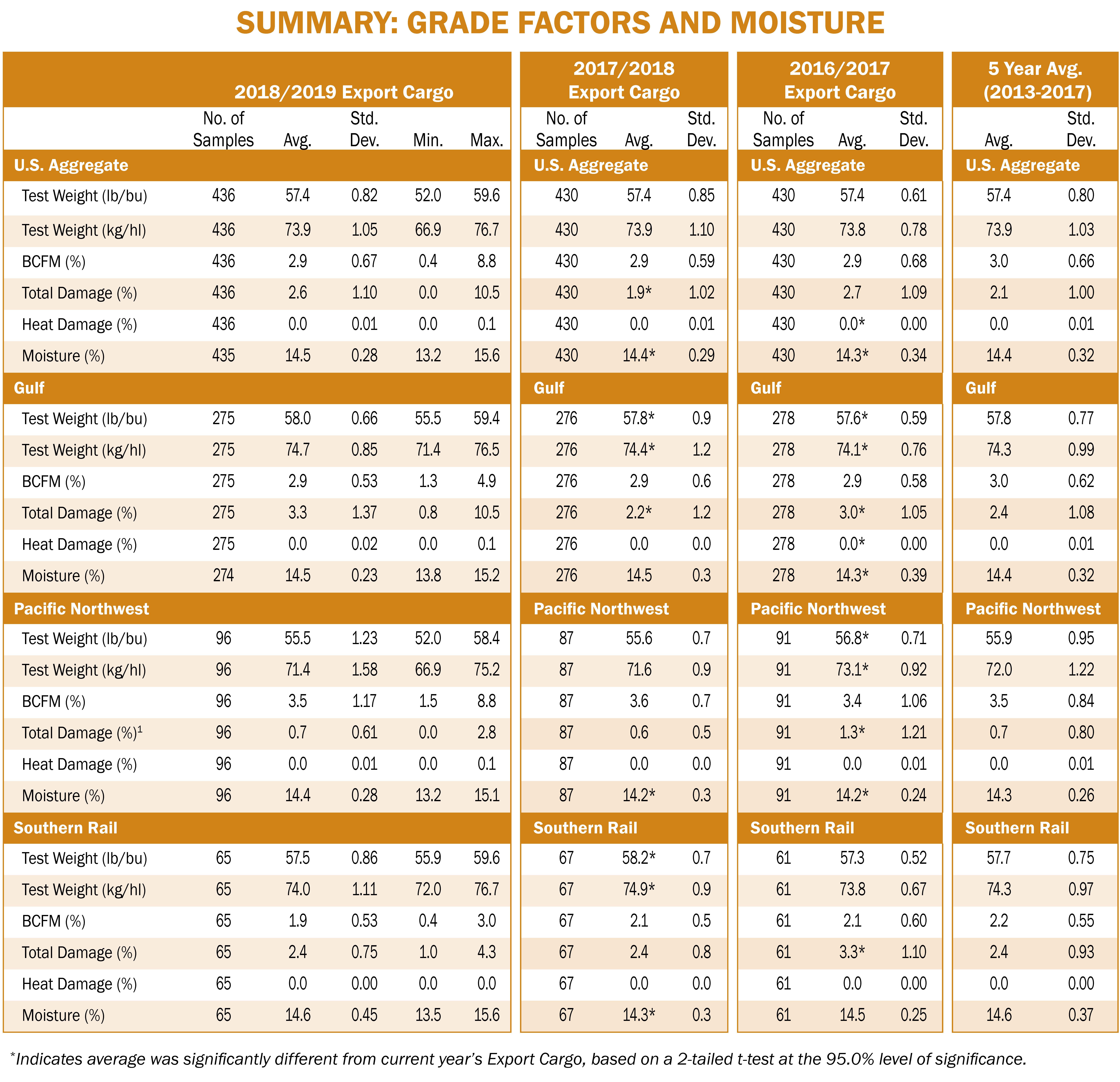Moisture
Moisture content is reported on official grade certificates, and maximum moisture content is usually specified in the contract. However, moisture is not a grade factor; therefore, it does not determine which numerical grade will be assigned to the sample. Moisture content is important because it affects the amount of dry matter being sold and purchased. Moisture content is also an indicator of whether a need exists for drying, has potential implications for storability and affects test weight. Higher moisture content at harvest increases the chance of kernel damage during harvesting and drying. Moisture content and the amount of drying required will also affect stress cracks, breakage and germination. Extremely wet grain may be a precursor to high mold damage later in storage or transport. While the weather during the growing season affects yield, grain composition and the development of the grain kernels, grain harvest moisture is influenced largely by crop maturation, the timing of harvest and harvest weather conditions. General moisture guidelines for storing shelled corn suggest that 15.0% is the maximum moisture content for storage up to six months under winter conditions, and 13.0% or lower moisture content is recommended for storage of six months to more than one year for quality, clean corn in aerated storage under typical U.S. Corn Belt conditions.
Results
- Average U.S. Aggregate moisture content (14.5%) was slightly higher than 2017/2018 (14.4%), 2016/2017 (14.3%) and the 5YA (14.4%).
- Moisture content standard deviation from the 2018/2019 samples (0.28%) was slightly lower than 2017/2018 (0.29%), 2016/2017 (0.34%) and the 5YA (0.32%).

- The moisture content of the samples ranged from 13.2 to 15.6%, or 2.4 percentage points. This range is similar to 2017/2018 and 2016/2017 (both 2.2 percentage points).
- Average moisture content decreased between harvest (16.0%) and export (14.5%) and unifor- mity among samples increased, as indicated by the lower standard deviation at export (0.28%) compared with harvest (1.58%). Drying at the local elevator lowers harvest moisture content to levels safe for storage and transport. Uni- formity in moisture content increases between harvest and export as the corn from various sources is commingled and conditioned to bring it to the desired moisture content.
- Of the 2018/2019 samples, 41.6% had a moisture content above 14.5%, which was higher than the 31.2% in 2017/2018 and 24.2% in 2016/2017. The increased number of samples above 14.5% moisture in this year’s crop indicates that care should be taken in monitoring moisture and checking storage conditions.
- The average moisture content in the Pacific Northwest ECA (14.4%) was lower than the Gulf (14.5%) and Southern Rail (14.6%) ECAs. The Pacific Northwest ECA also reported the lowest average moisture content among the three ECAs for 2017/2018, 2016/2017, and the 5YA.


